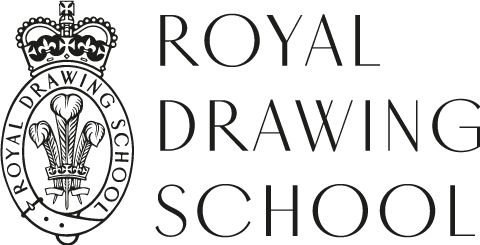Course Structure
The Drawing Year consists of three ten-week terms, running from September until the end of June, a summer break, then a final term running from September to December. Students keep their studio space over the summer break and continue to work unsupervised on their own practice.
- Minimum of 3.5 days a week attendance at courses
- Wednesday Core Programme
- Wednesday evening forum and lecture series
- Engagement with an ongoing studio practice alongside elective courses
In the fourth and final term, students commit to attending at least one full-day course each week and retain their studio space in order to prepare for the end of year exhibitions in December. During this period students also attend professional development sessions, acting as a springboard into life as a practising artist after the course.
Drawing courses
Students choose from over 38 drawing courses on offer each term. These are held in the Shoreditch studios and out of house and are divided into the three main areas of the School's curriculum: Drawing in the Studio, Drawing from Art, and Drawing London.
Core
Programme
The Core Programme is an opportunity for The Drawing Year students to come together as a year group every Wednesday. This intensive component of the programme introduces a wide variety of approaches, subjects and themes that students may want to explore further in a 10-week course. In these sessions, students are pushed to experiment with new ways of seeing and asked to critically engage with each other’s work. Discussions and themes that develop in these sessions are often expanded in the forums at Shoreditch. Core Programme sessions are taught by Senior Faculty, visiting artists and alumni faculty, who often collaborate with one another.
Forums and lectures
All students attend forums and lectures on Wednesday evenings, some are open to the public whilst others are exclusively for Drawing Year students. Forums, and tutor-led and peer-to-peer crits offer an opportunity for debate on aspects of drawing in historical and contemporary contexts. Students also give contextual studies presentations on their own work or areas of research.
Lectures and online in-conversations with contemporary artists, curators and art historians take place throughout the term. Past speakers include, Sir Peter Blake RA, Helen Cammock, T. J. Clark, Daniel Crews-Chubb, Eileen Cooper RA, Dexter Dalwood, Tracey Emin RA, Denzil Forrester, Maggi Hambling, David Hockney RA, Chantal Joffe RA, Rachel Jones, Michael Landy RA, Ana Maria Pacheco, Grayson Perry RA, Hans Ulrich Obrist and Lynette Yiadom-Boakye.
Tutorials and reviews
- Two tutorials each term with a senior faculty member
- Individual review of students’ work each term by senior faculty
- Twice yearly reviews by the External Assessment Board
- No written component
- Course culminates in an End of Year Exhibition in December
A final assessment is made and certificate awarded by an independent board of artists, writers and curators.
Exhibition
An end of year drawing
exhibition is held in December at the Royal Drawing School's gallery in
Shoreditch. Alongside the main exhibition, the school offers a Collectors
Preview which is well attended by curators, collectors and critics. Last year's
Preview was held at Christie's in central London. In addition to
these, students often arrange open studios where they can show other work from
their studio practice.
Various prizes are awarded on the opening night of the main exhibition including the Christie's Drawing Prize of £15,000 awarded to an outgoing Drawing Year student each year to enable them continue in their practice as an artist, this prize culminates in a solo exhibition of work.
The Drawing Year brought me back to making art and I think that without it I would not be an artist now.Phoebe Stannard Drawing Year 2010
